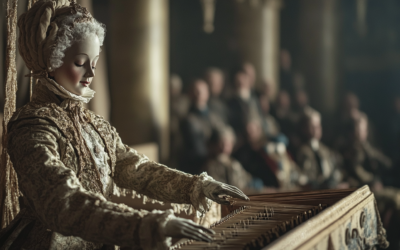Mozart's K 71
A Fragment Shrouded in Doubt and Uncertainty
Mozart’s K 71, an incomplete aria, is yet another example of musical ambiguity. The fragment’s authorship, dating, and even its very existence as a genuine Mozart work remain open to question. With no definitive evidence, how can this fragment be so confidently attributed to him?
Mozart in Italy: The Untold Story
Was Mozart truly a solitary genius, or was he merely the instrument of his father’s ambition? “Mozart in Italy” challenges the conventional narrative, revealing a complex dynamic between father and son that shaped the course of music history. Prepare to question everything you thought you knew.
“In the world of Mozart, certainty is often a luxury we cannot afford.”
Mozart in Italy
Mozart’s K 71, “Ah, più tremar non voglio,” is yet another aria that challenges our understanding of Mozart’s creative process—or, perhaps more accurately, the myth surrounding it. A mere 48-bar fragment, this aria is based on a text by Metastasio from Demofoonte, Act I, Scene 1, yet its attribution to Mozart remains as speculative as ever. Despite being included in the Köchel catalogue, its legitimacy as a work by Mozart is, at best, dubious.
First, there’s the issue of its provenance. No signature or clear indication of the composer exists within the surviving fragment. The only source for the details we have about this piece comes from Johann Anton André, who, in the early 19th century, provided a so-called “completion” of the score. The lack of direct evidence leads us to wonder: if this aria were truly by Mozart, why would he not have signed it as he did with many other works? The absence of Mozart’s autograph casts doubt on its authenticity, yet it continues to be hailed as a Mozart composition in the Köchel catalogue.
Then there’s the troubling issue of dating. Some sources place the aria as contemporary with Lucio Silla (1772), while the Köchel catalogue places it in 1769 or early 1770. The conflicting dates alone should raise red flags. Could Mozart, a composer so meticulous about his cataloging, have forgotten to date this fragment properly? Or are we witnessing a careless inclusion in the canon, more based on the myth of Mozart’s genius than on reliable documentation?
The fragment’s incomplete nature further complicates matters. Only 48 bars remain, suggesting that much of the piece is lost, and the possibility that entire sections of the aria were never written down at all looms large. Furthermore, the aria’s context remains a mystery: was it an unfinished experiment? A discarded attempt at opera seria? Or, perhaps, just a fragment of something more substantial that was never completed or deemed worthy of preservation?
As with many other works attributed to Mozart, K 71 serves as a reminder of how the myth of Mozart often overshadows the reality of his creative output. The incomplete, ambiguous nature of this aria makes us question whether it truly belongs to Mozart at all, or if it’s merely another piece of historical fiction we’ve come to accept because of the composer’s legendary status.
You May Also Like
When the Myth Collapsed
Vienna exposed the myth: La Finta semplice was riddled with errors, and Wolfgang’s supposed opera genius was nothing more than Leopold’s fabrication. With their reputation in ruins, father and son turned to Italy, hoping to rewrite history.
The London Notebook and the Vienna Disaster
Far from the myth of a flawless young genius, Mozart’s London Notebook reveals musical struggles and guided exercises, while the Vienna opera disaster proved that his father played a far greater role in his compositions than legend would have us believe.
Versailles, Vanity, and the Pursuit of Prestige
Leopold Mozart’s letters transformed his son’s European tour into a carefully staged fantasy—filled with exaggerated encounters, fabricated royal admiration, and a relentless pursuit of social prestige. But how much of it was real?
The Fabricated Childhood of Mozart
The legend of young Mozart’s divine genius crumbles under scrutiny, revealing a childhood dictated by Leopold’s ambition, carefully constructed myths, and a relentless pursuit of fame at the expense of genuine artistic education.
The Man Behind the Myth
Leopold Mozart’s legacy has been shaped by myths and hagiographies, but his letters reveal a man more concerned with financial gain and self-promotion than artistic integrity. Was he truly a devoted father, or simply an opportunist?
Constanze vs. The Catholic Church
For over two centuries, scholars have debated the circumstances surrounding Mozart’s burial. Constanze Mozart’s supposed inability to mark his grave, the confrontation with the Catholic Church over funeral masses, and the baffling disappearance of Mozart’s body all contribute to a mystery stranger than fiction. Did a powerful group keep her silent? And what really happened to Mozart’s remains?







